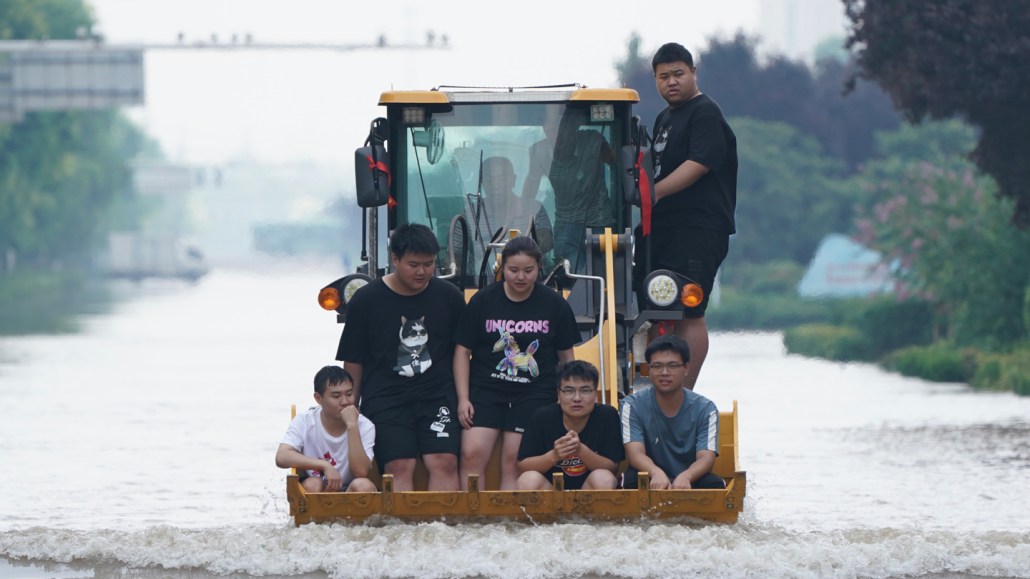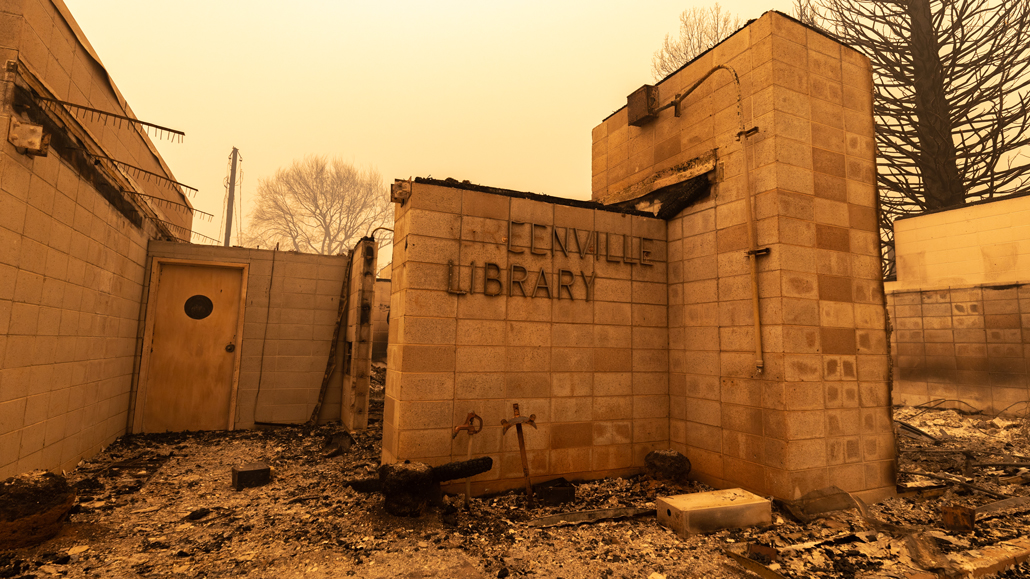
Torrential rains flooded Xinxiang in China’s Henan province in mid-July 2021, leading to dramatic rescues like this one. A new U.N. report finds that human-caused climate change is linked to extreme weather events all around the globe.
Cui Nan/China News Service via Getty Images
The science is unequivocal: Humans are dramatically overhauling Earth’s climate. The effects of climate change are now found everywhere around the globe and are intensifying rapidly, states a sweeping new analysis released August 9 by the United Nations’ Intergovernmental Panel on Climate Change, or IPCC. And the window to reverse some of these effects is closing.
“There is no room for doubt any longer” about humans’ responsibility for current climate change, says Kim Cobb, a climate scientist at Georgia Tech in Atlanta and an author on the first chapter of the report. “And now we can say quite definitely that a whole class of extreme [events]” is linked to human-caused climate change.
Climate change is already affecting every region on Earth in multiple ways, from drought and fire conditions in the U.S. West to heat waves in Europe and flooding in Asia, the report notes (SN: 7/7/21). Each of the past four decades has been the warmest on record since preindustrial times (SN: 5/26/21).
The study also looks at several different scenarios of greenhouse gas warming, including perhaps the most hopeful scenarios in which by 2050 the world achieves “net zero” carbon emissions, where emitted gases are balanced by carbon removal from the atmosphere.
If the world gets down to net-zero emissions, the decades afterward hold “hints of light,” says Baylor Fox-Kemper, an oceanographer at Brown University in Providence, R.I., and the coordinating lead author of the new report’s chapter on oceans and Earth’s icy regions. “Temperatures come back down a little — not all the way back to preindustrial times, but there’s a little recovery.”
But other changes are irreversible on near-future timescales — that is, the next century or more, Fox-Kemper says. Even in those mid-century net-zero emissions scenarios, “it’s still pretty bad,” he says. Sea levels, for example, will continue to rise until about the year 2300, driven in part by the juggernaut of Greenland’s melting ice sheet (SN: 9/30/20). “We may have already crossed [the] threshold beyond which Greenland’s melting could be stopped,” he says. Still, swift and deep emissions reductions would significantly slow how much sea levels will rise by the end of the century, the report finds.
The new analysis is the sixth in a series of massive assessment reports undertaken by the IPCC since 1990. In each report, hundreds of scientists from around the world analyze the findings of thousands of studies to form a consensus picture of how Earth’s climate is changing and what role people play in those changes.
“The key message [of this report] is still the same as was first published in 1990 … human-induced emissions of greenhouse gases pose a threat for humans’ well-being and the biosphere,” said Petteri Taalas, Secretary-General of the World Meteorological Organization, at an event announcing the report’s release August 9.
But researchers understand climate change far better now than they did in 1990, when the first assessment report was released. In the last three decades, new findings have poured in from tens of thousands more observing stations, from a wealth of satellite instruments, and from dramatically improved climate simulations (SN: 1/7/20).
The IPCC’s fifth assessment report, released in several parts during 2013 and 2014, was itself a game changer. It was the first to state that greenhouse gas emissions from human activities are driving climate change — a conclusion that set the stage for 195 nations to agree in Paris in 2015 to curb those emissions (SN: 4/13/14; SN: 12/12/15).
The Paris Agreement set a target of limiting the global average temperature to 2 degrees Celsius above preindustrial times. But many island nations and others most threatened by climate change feared that this target wasn’t stringent enough. So in an unprecedented step, the U.N. commissioned a report by the IPCC to compare how a future Earth might look if warming were limited to just 1.5 degrees Celsius instead.

That special report, released in 2018, revealed in fine detail how just half a degree of extra warming by 2100 could matter, from the increased likelihood of heat waves to higher sea levels (SN: 12/17/18). The one-two punch of those concrete findings and scorching temperatures in 2019 grabbed the attention of public and policy makers alike.
Scientists were surprised by how hard the 1.5 degree report landed. “Even for me,” says Ko Barrett, vice chair of the IPCC and a senior advisor for climate at the U.S. National Oceanic and Atmospheric Administration, “a person who has dedicated my entire professional career to addressing climate change, the report caused me to rethink my personal contribution to the climate problem. Climate change was not some distant temperature target to be hit in the ethereal future. It was close; it was now.”
IPCC scientists hope the new report, with its powerful emphasis on the regional and local effects of climate change — fully a third of the report is devoted to outlining those — will have a similar impact. And its timing is significant. Beginning October 31, heads of state from around the world are scheduled to meet in Glasgow, Scotland, to discuss updated — and hopefully increasingly ambitious — plans to reduce emissions to meet the targets of the 2015 Paris Agreement.
With previous reports, “the world listened, but it didn’t hear. Or the world listened, but it didn’t act strongly enough,” said Inger Andersen, executive director of the U.N. Environment Programme, at the Aug. 9 event for the report’s release. “We certainly urge them … to listen to the facts on the table now.”







